So I decided to write a post on Asian skintones, or more specifically Asian undertones, because I think that as an Asian, sometimes it's harder to tell if you're warm, cool, neutral or olive than if you were Caucasian. But why write a post specifically dedicated to Asian undertones, as opposed to undertones for everyone in general? There are two reasons for this:
- Most literature out there right now on discerning undertones still assumes a Caucasian reader (e.g. checking to see if your veins are blue or green, checking to see if your skin is pink or yellow, or classifying yourself as a Spring/Summer/Autumn/Winter), which are not as helpful to an Asian girl. Most Asian girls I know (including me) have trouble using traditional classifying techniques, as sometimes they do not fall into any of the groups, or they fall into more than one group. In fact, for some Asian girls, these techniques tend to bring about more confusion than anything else.
- A large proportion of Asians have surface yellowness in their skin. Chinese people, like me, are the most obvious examples, although I've noticed some Indians have surface yellowness too. As a result, people tend to assume that you're warm just because your skin is yellow. However, this is not always the case. The reason why people often assume so stems from a conception of cool-toned skin as being 'pink', as in Caucasian-skin-pink, and this conception in turn is due to traditional literature on colour theory classifying people as either pink, or yellow. That classification is all fine and well - it's not inaccurate, but it's definitely not complete, because this literature makes the implicit assumption that the audience is Caucasian, because Asians in general don't have Caucasian-pink skintones, even if we are cool-toned. To say that all Asians are warm-toned because we have yellow skin is to confuse skintone (which is the surface colour of your skin: beige, tan, etc) with undertone (which is whether you are cool, or warm, or neutral), and not to mention a very horrible generalization.
Since Asians don't have Caucasian-pink skin, it's harder to tell what undertones we have just by looking at how pink or yellow we are - since we're mostly yellow! That has led tons of people (including people actually in the makeup business) to assume that Asians = warm undertones, when in reality, the surface yellowness of your skin does not necessarily make you warm, just like how having rosacae does not necessarily make you cool-toned just because you have a pink face. Like I said before, to do so is to confuse skintone with undertone, and there's a big difference between the two! Furthermore, I've noticed so many Asian girls wrongly categorize themselves as warm, and it really annoys me. Seriously! I can't tell you how many times I've seen a beautiful cool-toned Asian girl wearing peachy orange blush and bronzey orangey eyeshadow because some silly makeup girl at a makeup counter just took one cursory look at her skin and told her she was warm just because she was Asian (and yes, both Asian and Caucasian makeup assistants have been known to wrongly classify Asian undertones). And lastly, I'm writing this post because, after 3 years of experimenting and wrongly thinking I was warm-toned, I've come to realize that I'm really not warm, but olive, with cool-to-neutral undertones, and I want to save you guys all the time and money I wasted trying to figure things out.
That said, Asian skintones and undertones are confusing for lots of people, even makeup artists, because they were probably taught the "traditional" way of looking at skintones and undertones, which assumes Asian=yellow=warm. Unfortunately, the "traditional" method of determining skintones and undertones was developed way back in the 1970's or 1980's, and unfortunately, as a reflection of historical times then, was centered almost entirely around Caucasian skintones. If Asian skin was at all considered, it was all lumped together under one category - "Exotic" or "Ethnic", and people barely made any effort to separate coloured women from Asian women, or even the different types of Asian women from each other, when in reality, we all know a woman from India will have different colour cosmetic needs compared to say, a woman from China! Even more recent literature on this topic still tends to make the fatal errors I've described. So, this is my take on the traditional method. The principle I'm using - cool, neutral, warm, olive, is still mostly the same, but I'm tweaking it, and showing how it can be understood in the context of Asian skin.
So here we go. It's going to be a hefty post. I'm sure a lot of people are going to disagree with me, and insist that yellow = warm. And if this is confusing - well, I didn't say it wasn't going to be. After all, it took me three years to figure out all that I'm going to write!
First of all, if you're Asian - STOP ASSUMING YOU'RE WARM. Yes, that's you. Yup, don't look away! I said you! Please don't make the mistake of assuming you're warm just because some snooty girl wearing a brush belt at a MAC Counter told you so. You know yourself best, and you've probably experimented with various makeup colours on your skin before, and you know how they looked on your skin, so you'd be in a better position than some snooty makeup girl to know what undertone you are.
Instead of thinking of yourself as Warm-or-Cool, I encourage you to think of warmth and coolness as a spectrum. You know. Warm, Warm to Neutral, Neutral, Cool to Neutral, and Cool. And of course there's Olive, but I will talk about that later.
With this spectrum in mind, think about your previous makeup experiments. How did you feel with bronze eyeshadow on? Grey eyeshadow? How did you feel about a plummy lip? What about a coral lip? If necessary, do one half of your face with warm colours, and the other half of your face with cool colours. Go to a source of natural light (like a window) and look at one half, and compare it with the other half. Which half looks better? Do they both look equally good? If you looked better with grey eyeshadow, a plummy lip, and if the side of the face with cooler colours looks better, you're probably somewhere in the cool spectrum. If the side with warmer face looks better, you're somewhere in the warm spectrum. If they both look the same, you're probably neutral-ish. If you remember liking warm colours when you were more tan, and cool colours when you're more pale, then you just might be olive! You can even try this with clothes - think of your favourite pieces of clothing that looks best on you. Are they cooler or warmer colours on the whole? Is that favourite dress you look so good in a corally colour, or a deep navy blue?
Now that you've done that, you'll have a rough idea of where you fall under. Warm? Cool? Neutral? Or still not sure? Now, we'll go on to refine and clarify further by looking at your photos! :)
Huh, PHOTOS? Yup, take a look at your photos of yourself with your friends and family, both Asian and Caucasian, and photos in natural light are better. The reason why I suggest doing this is because Asians have a huge variance in undertones, and sometimes it's easier to figure out where you are by comparing yourself with others. On a fundamental level, its harder to tell cool-toned Asians from warm-toned Asians when we're all yellow - after all, a cooler yellow is harder to discern from a warmer yellow, than a pink is from a yellow, if you're looking at Caucasian skin. So, sometimes the best way to judge whether you're a cool yellow is to look at photos of yourself, especially photos with other Asian friends, so you can find your place within a whole spectrum of yellow. Look at your photos, and notice how your skin looks when you're next to them. Do you look cool sometimes, warm other times? Do you consistently look pink? Do you sometimes look greenish? Do you consistently look yellow? By looking at your own photos, you can get a sense of where you are on the undertone spectrum. And also, by comparing how cool/warm you are relative to other Asians, you'll avoid making the "Asian yellow skin = warm undertones" mistake, since you'll get to compare colours relative to each other, and give yourself a more nuanced appraisal of your skintone, and avoid mistaking surface yellowness for undertone yellowness.
I know most people have it drilled into their heads the all yellows are warm, so most people have trouble visualizing how a yellow can be cool. Think of a pale, lemony yellow vs a rich golden yellow. The pale lemon yellow is cool, while the rich golden yellow is warm. Here's an example of a warm yellow vs a cool yellow (thanks to pandamic on MUA):

The yellow on the left is what most people think of as "yellow" - its a golden yellow, and would pair best with warm colours - grass green, orange, rust red etc. However, the yellow on the right is a cool lemon yellow, and that actually looks better with cooler tones, like emerald green and deep blue-teal. So don't make the mistake of thinking that just because the surface of your skin is yellow, it automatically makes you warm. It doesn't, because yellow in itself can be warm or cool.
So based on how you appear in your photographs with your friends, you can get a good idea of how cool or how warm you are. If in general you tend to look pink, you're cool. If in general you tend to look yellow, you're warm. If you tend to be neither, you're neutral. And if you tend to look pink, but notice you have a green tinge to your skin sometimes (especially when compared to others) then you're olive with cool undertones, and if you tend to look yellow, but have a little bit of green, then you're olive with warm undertones. And if you look green sometimes, but equally pink and yellow, you can be olive, with neutral undertones. The more photos you look at, the wider your sample size, and the more accurate your judgement.
I know that sounds confusing, and it's useless without show-and-tell, so here are a few examples, using my own photos. These are all my facebook account photos. And they're also mostly from my college graduation because it was outdoors so we had good lighting in abundance. I'm going to walk you through each of the photos, and show you how I deduce my own skintone from my own photos. Hopefully after this you'll get an idea of how to go about looking at your own photos, and what to pay attention to when you take out your photo album!
Let's start with an easy one. Take a look at this picture.
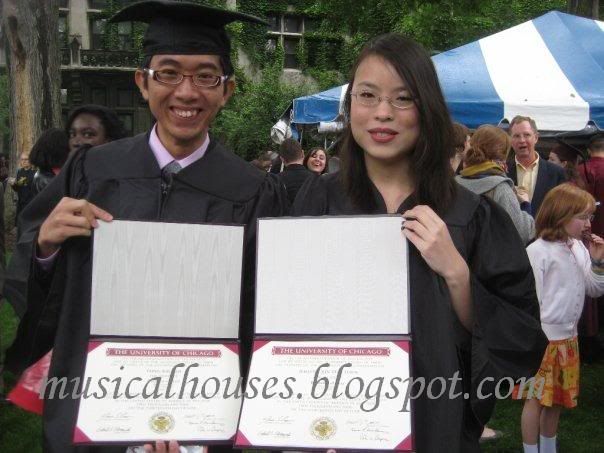
Notice the guy on the left is definitely warmer than me, the girl on the right. In fact, next to me he looks burnt orange, and I look horribly pink. So he's warm, and I'm somewhere in the cool spectrum. See how this is so much more helpful than just looking at pictures of yourself in isolation? If I had just given one of me alone, you might have made the mistake of just thinking I was warm because of my yellow Asian skin. But here you can see there's a spectrum. Eventually, with enough practice, you'll be able to look at photos of yourself or your friends in isolation and discern their undertones, but before you get to that stage, it's really helpful to have a spectrum to compare to.
Next photo:

This one is also an easy one. Here you can tell we both have the same undertone - unlike the previous photo, there are no weird skintone clashes, and we look pretty harmonious colour-wise. So based on this photo, you can hypothesize that we are both cool-toned.
Let's try a third:
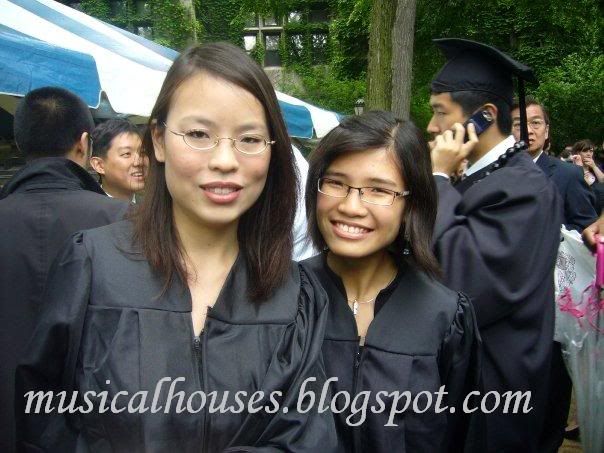
Here, it's obvious that my friend on the right is warmer than me. So she'll be in the warm spectrum, and I'll be in the cool spectrum. This photo is a really good comparison of Asian cool undertones vs Asian warm undertones. As you can see, it's possible to be cool-toned without being Caucasian-pink, because some yellows are cooler-toned than others. Notice also that both me and my friend have a weird green tinge to both our skins? The green tinge is a dead giveaway of olive skin. So we're both olives, too - only thing is that I'm olive with cool undertones, and she's olive with warm undertones.
If you didn't get what I meant, compare her with the guy in this photo.

That guy is one of the smartest guys I've know in my entire life. He's also a lot warmer than me. However, unlike the previous friend I posed with, he doesn't have a greenish cast to his skin, so although he's warmer than me, he's not olive as well. In fact, you may notice that he isn't as warm as some of the other people I've shown you. He's probably more neutral. I'd place him as neutral, or neutral-warm. And as you can see in this photo, my olive undertones are really showing through. I look really green.
Here's another:
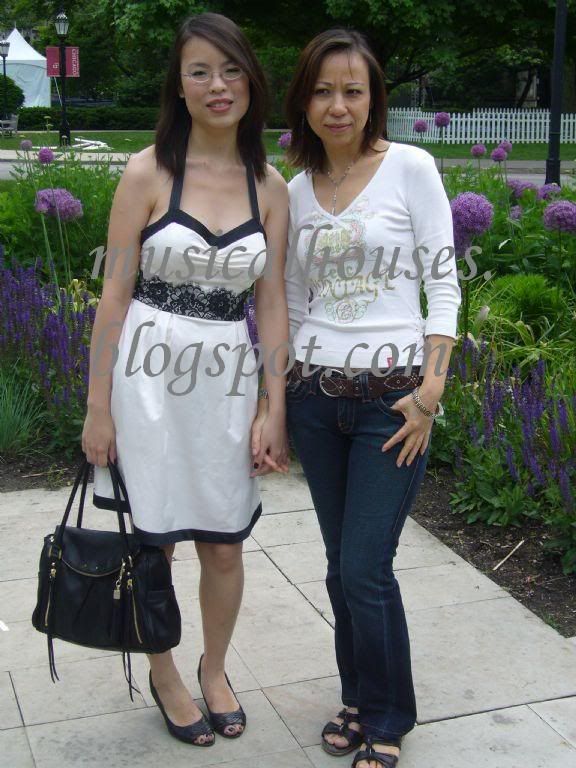
That's my mum and I at graduation. Yes, she looks young, doesn't she? I hope I age as well as her. Anyway, as you can tell, she's warmer and more olive than me - next to her I look really pink. But you can still sort of see a little bit of olive peeking through though.
Let's try another one:

Don't you just love Orlando?! Florida is SO AMAZING. Anyway, here you can see I'm cooler than my friend, although my friend isn't warm either. We're both cool, but she's less cool than I am, and next to her, I look really, really pink! I'm going to place her as neutral, to neutral-cool, while I'm definitely in the cool range here. If you notice carefully, you'll also notice that my skin looks a little green, as opposed to my friend, who looks more yellow - check out the shoulders and neck - and this is my olive-ness showing through again.
Now let's look at another one:
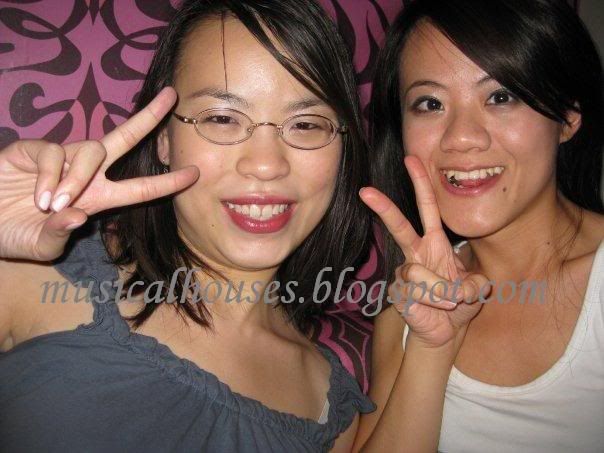
Wow, that's an embarrassing photo. Remind me not to let my friends take photos of me clubbing again. But anyway, I included this because it's a really good differentiation of olive versus cool undertones. Notice that my friend is really pink, and I look kind of green? That's the difference just being cool, and being olive with cool undertones.
Here's another example of the same thing:

Once again, as you can see, my sister (on the left) is a lot pinker, and less green than me - obviously she's cooler and has none of my olive. Meanwhile, I look really green.
Now that you've got the basics, let's do a few people at a time:
For starters, let's try this photo.
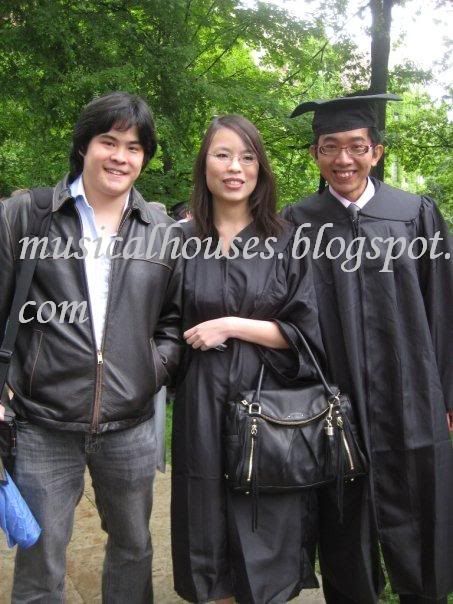
Can you tell who is what undertone? The guy on the right is obvious - he's really warm compared to everyone else, and he's most probably warm. The other two people are cool-toned, but if you look closely, you'll see the guy on the left is more pink, while I'm slightly more green.
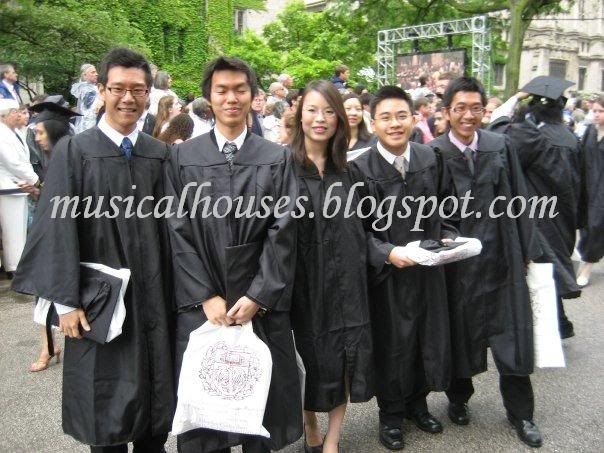
Wow, a row of Asians! LOL. But seriously, photos like these are extremely useful for telling you where you are in the colour spectrum. Can you guess these people?
Left - Right: Warm, Warm (and if you noticed, he's more warm than the previous guy), Cool (and Olive - here you can see I look greener than everyone else), Neutral, and Warm.
Next photo:
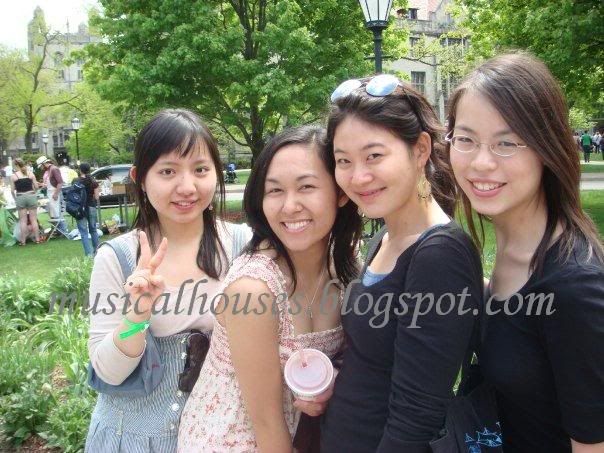
I know, I know. Aren't Asian girls hot? :P And as for FOB hand gesture - we know it's considered FOB, but we do it anyway because we like it. Hah. So there. And I might add, the peace hand gesture is only considered FOB in America anyway, so in a wider, world context, it ain't so FOB, y'all. Anyway, if you've learned well, the first thing you'll notice is how the girl that is second from the left is so much warmer than everyone else. Let's start: neutral, warm, neutral, and neutral, with just a hint of pink. If you have a photo like this, that makes you look like a totally different undertone, I encourage you to think in terms of a spectrum once again. From this photo, I know that although I'm cool, I'm not on the extreme end of the cool spectrum, and so maybe neutral-cool is a better description of me.
Here's another photo with Asian (and non-Asian) girls:
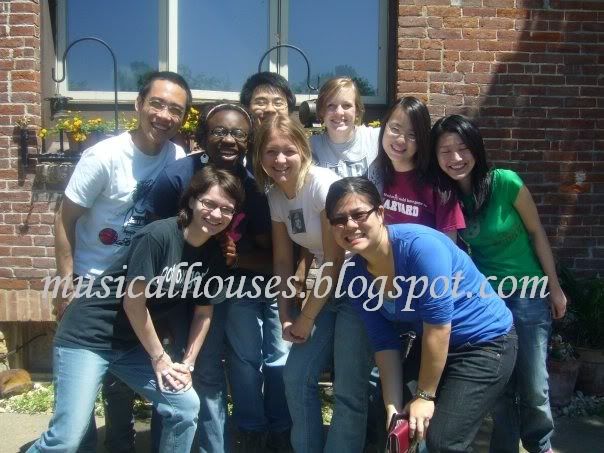
Look at the three Asian girls at the right of the photo. Can you tell that the two in the back row are cooler than the one in the front row?
So after looking at all my photos, I'm able to conclude that I'm olive, with neutral-to-cool undertones.
Now that's done it. You should be able to look at your own photos and see where you stand relative to your friends.
And because I love you guys, I'm going to talk a little more about olive skintones, because those are tricky, particularly for Asians.
A Very Short Note on Olive Skintones
(Edited 4/3/2010: I added that heading above because I realised that people were referring to this post not just for Asian skintones, but also for clarification on Olive skintones, Asian or not. I hope this heading helps such readers find the "Olive section" more easily without having to wade through the entire post. If you are one of those readers, I do encourage you to take a look at the photos before this section and my comments on them, as I do talk abit about Olive skintones in the previous section too.)
First of all, olives are tricky to begin with, regardless of whether you're Asian or not. People tend to have a misconception of olives being the exclusive domain of tanned people like Eva Longoria, but that's NOT true. You CAN be fair, AND be olive. Olive is NOT a measurement of how dark or light your skin is, but it is referring to the fact that you have both warm undertones and cool undertones in your skin. So yes, you can be NC10 and still be olive. Heck, I'm NC20 and I'm olive.
Another thing that I've noticed is that people tend to have a miscoception that all olives have warm undertones, just like how they tend to have a misconception that all Asians have warm undertones. That's not true. Olives can be either warm or cool. So olive itself isn't a undertone per se, but it IS a property of your skintone, and something that can impact whether you are cool or warm. A lot of people are going to disagree with me on this, but the way I see it is as such: if you have olive skin, you have a mix of both cool and warm undertones, which complicates matters when you try to discern your undertone. Depending on how much cool, how much warm, and how fair/dark your skin is, you can either have cool or warm undertones. So you can be fair or dark olive, with warm or cool undertones. Which means you can be any of these if you're olive:
- Dark Olive with Warm undertones (this is most common, and I'll explain why later)
- Dark Olive with Neutral undertones
- Dark Olive with Cool undertones (this is rare, and I'll explain later)
- Fair Olive with Cool undertones (most common, once again I'll explain)
- Fair Olive with Neutral undertones
- Fair Olive with Warm undertones (this is rare, and I'll explain)
- Medium Olive with Warm undertones
- Medium Olive with Neutral undertones
- Medium Olive with Cool Undertones
The reason why dark olives with cool undertones are rare, and fair olives with warm undertones are rare, is that olive skin tends to change undertone with depth of skintone. This shouldn't come as a surprise - after all, one of the things that makes someone olive is that he/she has both warm and cool undertones. So, because of that, when you get darker through tanning, the yellow in your skin tends to show through more, so the darker you get, the more yellow you get, and you become olive, but warm. However if you are fair, and olive (like me), the olive in your skin tends to show through more, and this is actually a shade where cool colours are more flattering. So you become olive, but cool. This also explains why a lot of cool olives (especially Asians) kind of look "greenish" in some lights. It's a result of their olive undertones and fair skintone mixing together. So most olives tend to be warm if they're dark, while they tend to be cool if they are fair. Most people only conceive of olives as being dark, which is why sometimes they assume that olives are necessarily warm, which is not the case all the time, because if you're olive and fair, you can be cool, and you're more likely to be cool than warm. And if you're medium olive, you can be either warm or cool, but you can also be neutral. Cool right? So remember folks, olive is NEITHER cool nor warm, but it can be EITHER, because it just means that you have both undertones in your skin. Thus, if you are olive, depending on the depth of your skintone, you can be cool, warm, or neutral!
If that hasn't convinced you, or if you aren't sure if you're really olive or not, take a look at pictures of yourself in natural light. One of the things about being olive is that sometimes you'll look more yellow in photos, but other times you'll look more pink, and sometimes you'll even look green (especially if you are a fair Olive), depending on the lighting.
Observe:
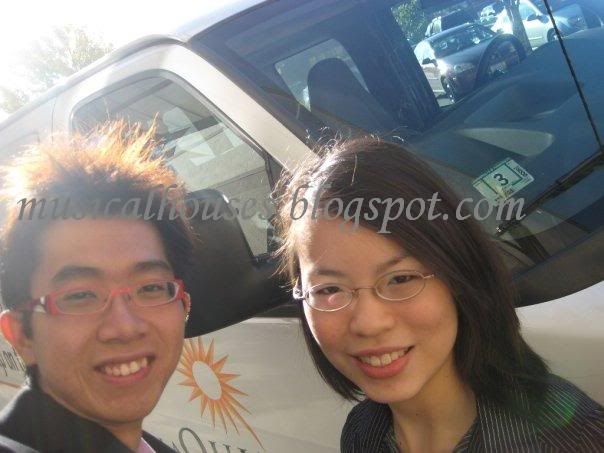
In this photo, I look really warm. And for anyone wondering why that guy on the left is always in so many of my photos, it's NOT because he's my boyfriend, or my cousin, or related-to-me-in-some-special-way. It's because he's the resident facebook photo whore, so most of these photos were taken with his camera and uploaded there. And also because he's obviously warm, so having him in photos makes for a good tutorial on discerning Asian undertones.
Anyway, as you can see, I look warm in the above photo, but in this photo below, I look cool. (See what I said about knowing that it's FOB and still doing it? And on another note, I have no nail polish on! Gosh.)
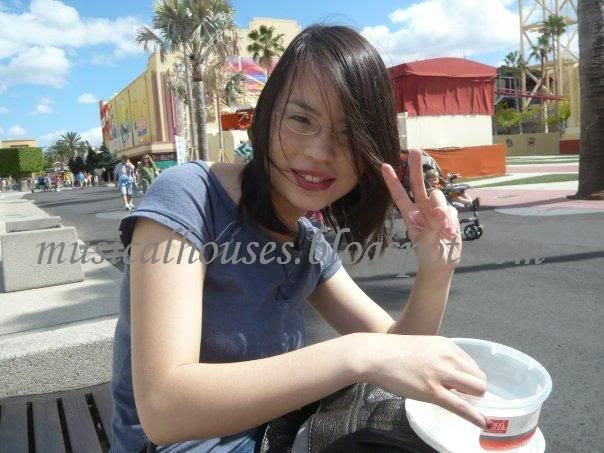
And here, I just look green (and yes, I'm such a makeup nerd that the highlight of my day is seeing an awesome looking Max Factor store).:

I'd like to clarify that this slight green tinge isn't always present in ALL olives, and even if it is, is present in varying degrees. In particular, pale olives who are cool-toned tend to have the most green in their skin, while darker olives who are warmtoned tend to have little to no green in their skin. But if you do see it, it's a clue that someone might be olive.
The interesting thing about this is that all these photos were taken in natural light, but as you can see, sometimes it can be tricky to deduce what undertone you are just by looking at yourself in isolation. Hence, this is why I recommend looking at yourself relative to other people in a spectrum of undertones, because the spectrum of undertones for Asians is much more nuanced than for Caucasians (in my opinion anyway), and sometimes, you need to make comparisons and see colours in a spectrum to break out of the "Asian=warm" fallacy. Eventually of course, with practice you'll get so good at it that you'll be able to just look at photos of one person only and figure out what undertone they are, but at first its always useful to compare to other people. After all, it's precisely because Asians have yellow skin that makes it so hard to discern their undertones with accuracy - distinguishing between cool yellow and warm yellow is not easy for most people, which is why so many people tend to pin any yellow person as warm, which is wholly inaccurate.
EDITED TO ADD: I'd also like to point out that this "yellow/olive = warm" fallacy doesn't just apply to Asians, although of course Asians are more prone to being wrongly classed as warm than Caucasians are. In general, a lot of pale olive Caucasians are also often wrongly classed as warm when in fact they are cool.
I've put up a photo here to illustrate the difference. This photo is from fellow makeup addict and friend Musings on Beauty. She's a pale olive with neutral-cool undertones who keeps getting classed as warm because of the yellow in her skin due to her olive undertones. However, her dad is clearly warm, and her mother is clearly cooltoned. So I though a photo of her lovely family together (all with her permission, of course) would be the perfect thing to illustrate the difference in Caucasians, and show that this "all-olives-are-warm" thing is fallacious for both Asians and Caucasians alike:
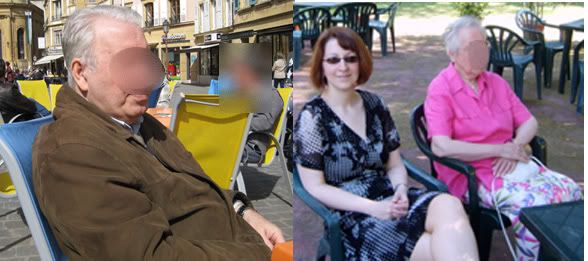
From left to right we have: Marie's dad, who is warm, Marie, who is pale olive, and her mum, who is cool.
You can clearly see the gradiation in skintone here. The dad is a lot yellower than either of them, and Marie is a lot cooler-toned than him. But she's also warmer-toned than her pink-toned mother. And in between both of them, Marie's skin has a bit of a green tinge too - a dead giveaway that she's not totally warm like her dad, but that she's olive. So you can see that there's a difference between being warm, olive, and cool.
So, that's it for today! I wish you good luck and all the best in your skintone evaluation!








